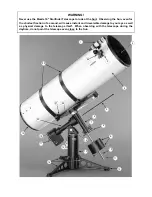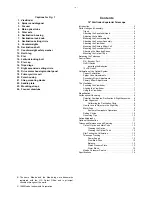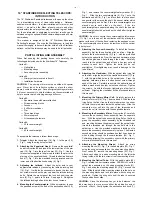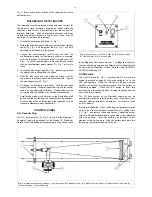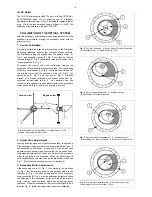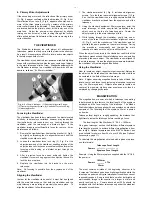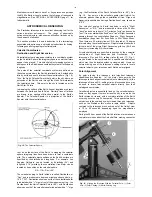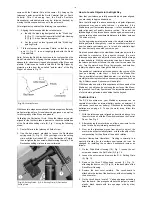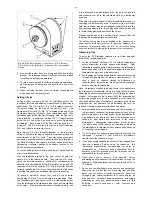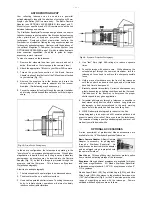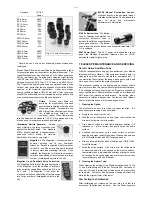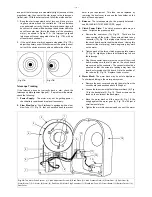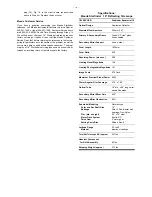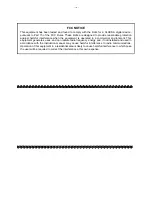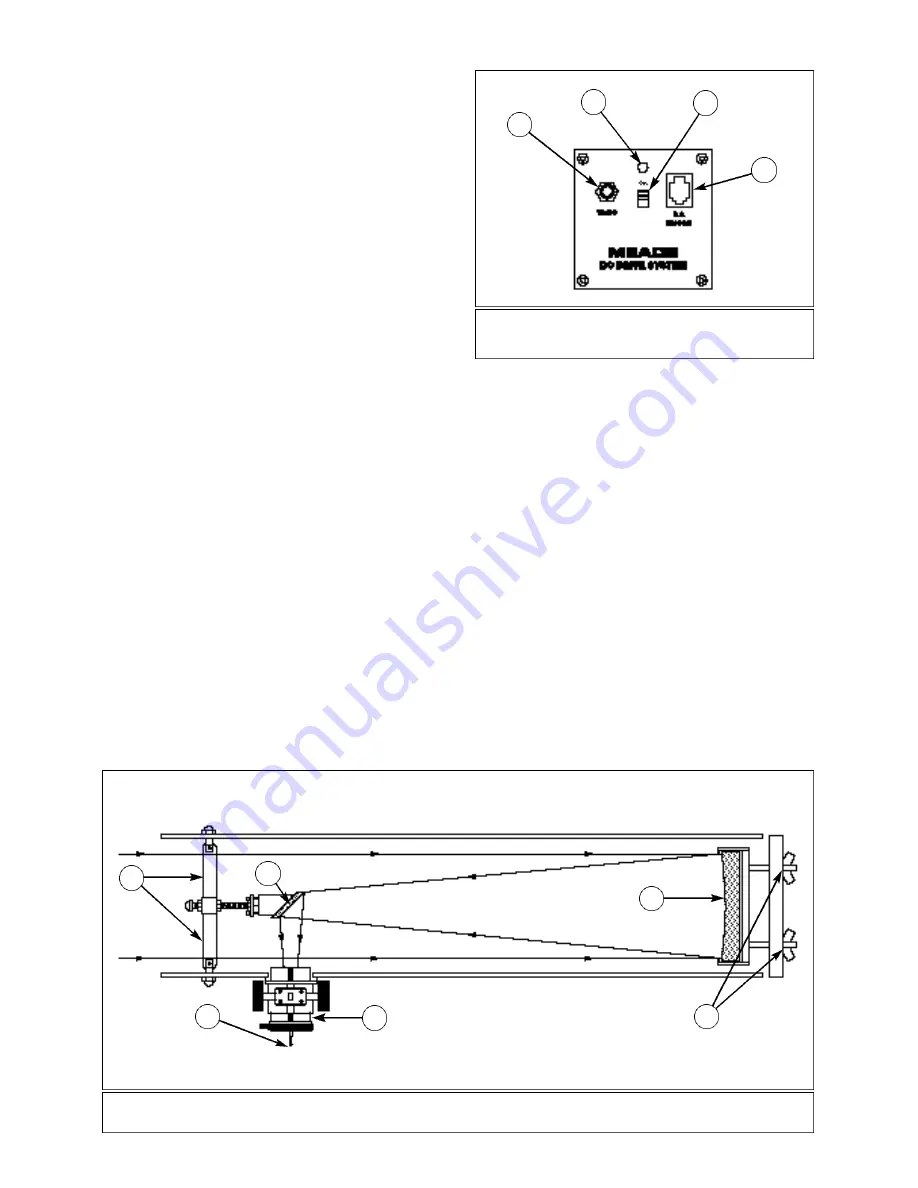
- 5 -
Fig. 1; this should prevent rotation of the telescope about the
declination axis.
BALANCING THE TELESCOPE
The telescope must be balanced around both axes in order for
the mount to track accurately, keeping an object within the
telescope's field of view. Most tracking errors are the result of
improper balancing. With an improperly balanced telescope
objects may become difficult to find or, once found, may be
easily lost. To balance the telescope:
1. Loosen the declination lock knob (7), Fig 1.
2. Rotate the telescope about both axes so that the declination
shaft (10), Fig 1, and the optical tube (4), Fig 1, are both
horizontal in relationship to the ground.
3. Loosen the counterweight lock knobs and slide the
counterweights along the declination shaft, as necessary,
until the telescope is balanced about the polar axis (5),
Fig. 1. Lock the counterweights in place and make certain
that the counterweight safety washer (11), Fig 1, is firmly in
place.
4. Loosen the mounting straps (23), Fig 1, just enough to allow
the optical tube to slide within the straps.
5. Slide the tube back and forth within the straps until the
telescope is in balance about the declination axis. Tighten
the mounting straps (23), Fig 1.
6. Re-tighten the declination lock knob. With the telescope
properly balanced, it should be possible to place the optical
tube in any position without drifting. Rebalancing may be
necessary with the addition of any optional accessories.
7. Small scribe marks may be placed on the Declination shaft
and optical tube to indicate the correct balancing positions.
Such scribing will be an advantage if the telescope is to be
frequently disassembled or transported.
CONTROL PANEL
R.A. Encoder Plug
The R.A. encoder plug (4), Fig. 2, is used if the Magellan I
Computer System is purchased for the Meade 16" Starfinder.
Details of how this additional encoder plug is used can be found
in the Magellan I instruction manual. The Magellan II system
requires a hardware upgrade and different control panel that will
be sent with the Magellan II Hand Controller (see OPTIONAL
ACCESSORIES, page 12.
On/Off Switch
The On/Off switch (3), Fig. 2, activates the DC motor drive
system (described on page 9). When the switch is "on", a red
LED will illuminate. When the red LED on the panel shines
steadily, the system is working properly and the battery is
sufficiently charged. When the LED begins to blink, this
indicates the internal battery pack is losing its charge and will
soon need to be replaced.
The DC drive system on the Starfinder telescope can be
operated from either an internal battery pack, requiring six (user
supplied) AAsize batteries, or an external 12 volt source (such
as a car battery).
Installing the Batteries: Open the battery compartment located
on the side of the control panel beneath the R.A. setting circle
(17), Fig. 1, and remove the battery carrier. The battery carrier
holds six AA-size batteries and is connected to the telescope
with a snap cable. Insert the batteries as indicated on the
diagram on the battery slots. Slide the battery pack back into
the battery compartment and close the lid.
Fig. 2: Control Panel. (1) 12vDC Outlet; (2) LED Indicator Light;
(3) On/Off Switch; (4) R.A. Encoder Plug.
1
4
2
3
Fig. 3: Newtonian Reflecting Telescope. (1) Spider Vanes; (2) Secondary Mirror; (3) Parabolic Primary Mirror; (4) Primary Mirror Tilt Screws; (5)
Focuser Drawtube; (6) Focused Image.
1
2
3
4
5
6


